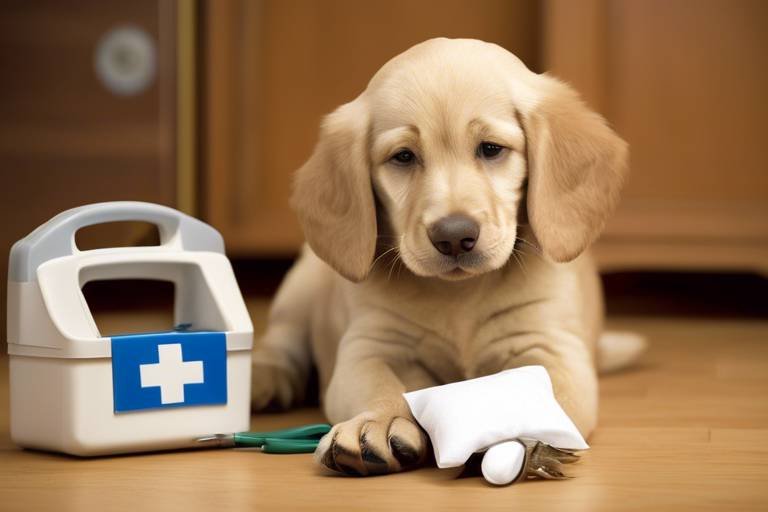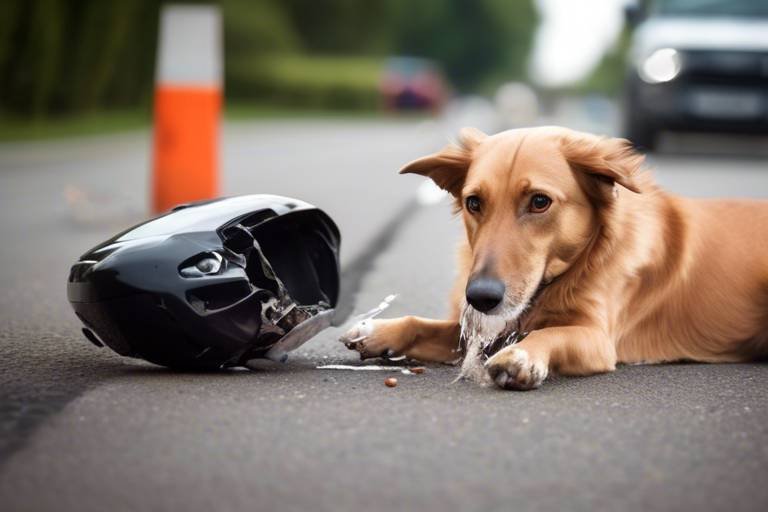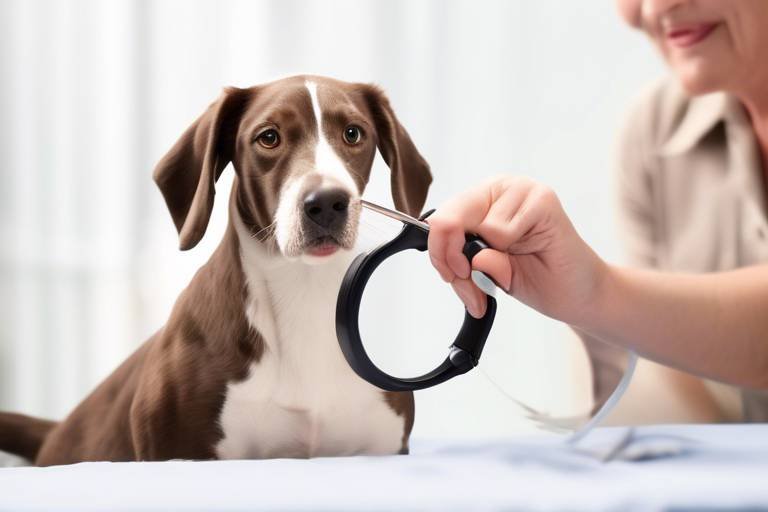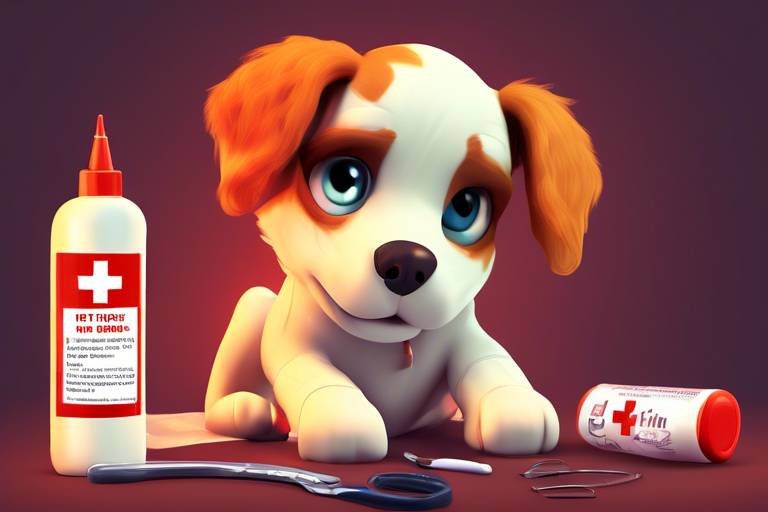First Aid for Common Pet Emergencies
As a pet owner, it’s essential to be prepared for any situation that may arise. Our furry friends can find themselves in all sorts of predicaments, from minor injuries to life-threatening emergencies. Knowing how to act quickly and effectively can make a significant difference in your pet's health and safety. In this guide, we’ll explore vital first aid techniques tailored for common pet emergencies, ensuring you have the knowledge and confidence to handle such situations. Whether your pet is a playful puppy or a wise old cat, being equipped with the right information can help you navigate through these stressful moments.
Understanding the signs of a pet emergency is crucial for every pet owner. Pets cannot communicate their pain or discomfort in the same way humans do, so it's up to us to be vigilant and observant. Common symptoms that indicate your pet may require immediate medical attention include:
- Difficulty breathing: If your pet is panting excessively, coughing, or struggling to breathe, it’s time to act.
- Unresponsiveness: If your pet is lethargic, unresponsive, or seems to be in a daze, this is a serious sign.
- Severe bleeding: Any significant bleeding, especially from the mouth, nose, or wounds, needs prompt attention.
- Vomiting or diarrhea: Persistent vomiting or diarrhea can lead to dehydration, which is dangerous.
- Signs of pain: Whining, yelping, or hiding may indicate that your pet is in pain.
Recognizing these indicators allows you to act swiftly and effectively, ensuring your pet receives the necessary care. Trust your instincts; if something feels off, don’t hesitate to consult a veterinarian.
Having the right supplies on hand can make all the difference in an emergency. A well-stocked first aid kit tailored for your pet can help you manage minor injuries and stabilize your pet until you can get them to a vet. Here are some essential first aid items every pet owner should keep in their home and vehicle:
- Adhesive bandages
- Gauze pads and rolls
- Antiseptic wipes
- Hydrogen peroxide (for inducing vomiting, if advised by a vet)
- Scissors and tweezers
- Thermometer
- Emergency contact numbers (vet, poison control)
These supplies will help you address a variety of situations, from cuts and scrapes to more serious emergencies. Being prepared can ease your worries and give you the confidence to act when it matters most.
Now that you know what supplies to have, let’s talk about how to assemble a comprehensive first aid kit tailored for pets. Start with a sturdy, waterproof container that can be easily accessed. Organize the items in a way that allows for quick retrieval during an emergency. Here’s a simple guide to help you create your pet’s first aid kit:
- Choose a container (like a backpack or a plastic bin) - Label the kit clearly (First Aid for Pets) - Store it in an easily accessible location - Regularly check and replenish supplies
By keeping your kit organized and up-to-date, you’ll be ready to tackle any situation that arises with your furry companion.
Including essential medications in your pet's first aid kit can be invaluable. Here are some important medications to consider:
| Medication | Uses | Dosage | Vet Consultation |
|---|---|---|---|
| Benadryl | Allergic reactions | 1 mg per pound | Always consult before administering |
| Hydrogen Peroxide | Inducing vomiting | 1 teaspoon per 10 pounds | Only if advised by a vet |
| Activated Charcoal | Poisoning | Varies by weight | Consult your vet immediately |
Always consult with a veterinarian regarding the administration of any medication to ensure safety and effectiveness. Keeping these medications on hand can be a lifesaver in emergencies.
Beyond medications, having additional tools can significantly aid in pet emergencies. Some useful items include:
- Bandages and adhesive tape for wound care
- A digital thermometer to monitor your pet’s temperature
- A muzzle to prevent biting if your pet is in pain
These tools can help you provide immediate care and stabilize your pet until professional help is available.
Learning how to perform CPR on pets in distress is a critical skill for any pet owner. The steps for performing CPR differ slightly between dogs and cats, but the fundamentals remain the same. Here’s a brief overview:
- Check for responsiveness and breathing.
- If unresponsive and not breathing, begin chest compressions.
- For dogs, place your hands over the heart and compress 100-120 times per minute.
- For cats, use your fingers to compress the chest gently.
- After 30 compressions, give two rescue breaths.
Timing and technique are crucial in saving lives, so practicing these techniques can prepare you for emergencies.
Different emergencies require tailored responses. Understanding how to handle situations like choking, heatstroke, and poisoning is essential for every pet owner. Let’s dive into these specific emergencies to ensure you’re prepared.
Choking can be life-threatening for pets. It’s crucial to identify the signs of choking, such as gagging, pawing at the mouth, or difficulty breathing. If you suspect your pet is choking, perform the Heimlich maneuver:
- For small pets, hold them upside down and give a few firm back blows.
- For larger pets, place your hands just below the rib cage and thrust inward and upward.
- Always seek veterinary assistance afterward, even if the object is expelled.
Being prepared and knowing these steps can save your pet’s life in a critical situation.
Heatstroke is a serious risk for pets, especially during hot weather. Signs of heatstroke include excessive panting, drooling, and lethargy. If you notice these symptoms, act quickly:
- Move your pet to a cooler area.
- Offer cool water, but don’t force it.
- Use cool (not cold) water to wet their fur.
Recognizing the signs early and taking immediate action can prevent serious health issues.
Q: What should I do if my pet is bleeding?
A: Apply gentle pressure with a clean cloth or bandage to stop the bleeding. If it doesn’t stop after a few minutes, seek veterinary help.
Q: Can I use human medications on my pet?
A: Some human medications can be harmful to pets. Always consult your veterinarian before administering any medication.
Q: How can I tell if my pet is in pain?
A: Look for signs such as whining, changes in behavior, or reluctance to move. If you suspect pain, consult your vet.
Q: When should I take my pet to the vet?
A: If your pet is unresponsive, has severe bleeding, or exhibits any concerning symptoms, it’s best to seek veterinary care immediately.
By being informed and prepared, you can provide the best care for your furry companions in times of need. Remember, your pet relies on you, so equip yourself with the knowledge and tools necessary to handle emergencies effectively!
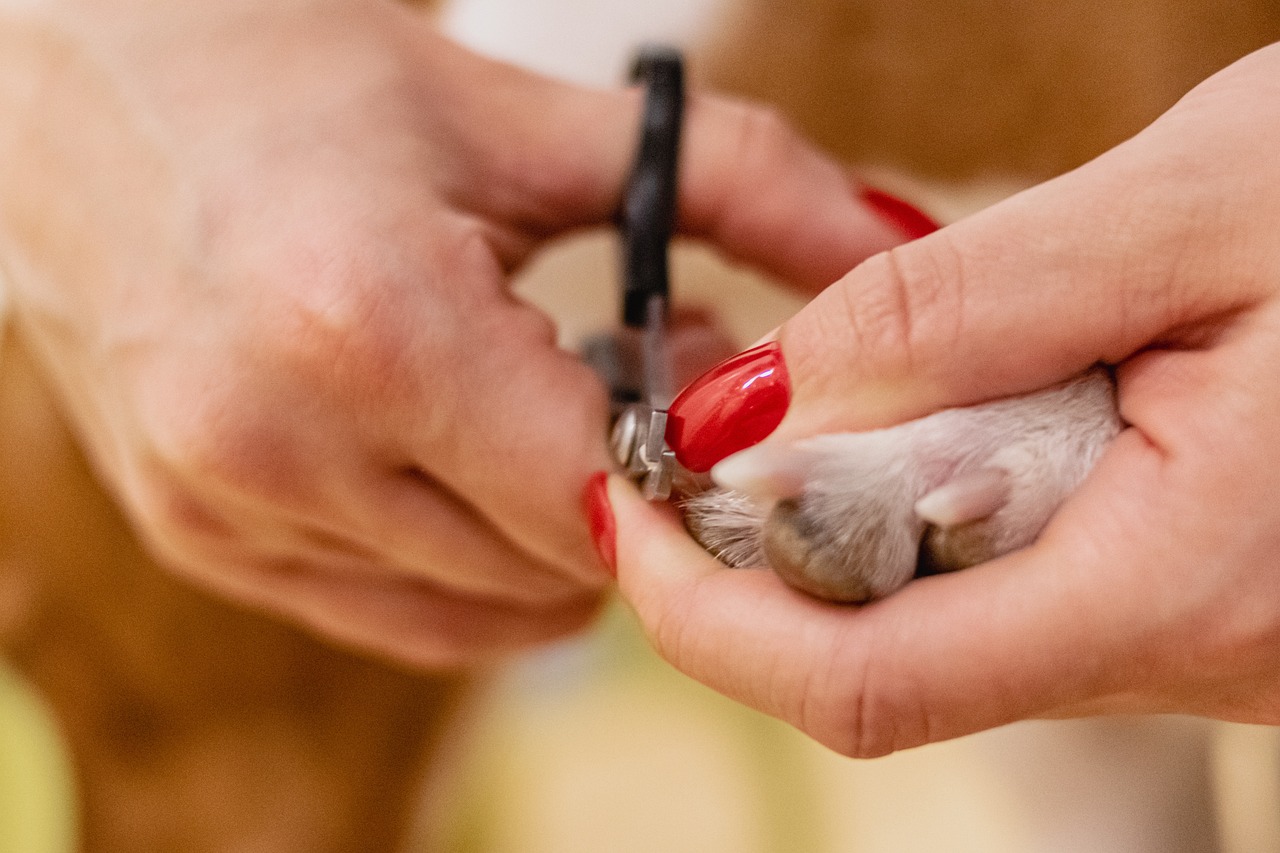
Recognizing Pet Emergencies
Understanding the signs of a pet emergency is crucial for any responsible pet owner. Just like humans, our furry friends can face health crises that require immediate attention. But how do you know when your beloved pet is in trouble? It’s not always easy, but being aware of certain symptoms can make a world of difference. Think of it like having a sixth sense—one that alerts you to potential dangers lurking beneath the surface.
Common indicators that your pet may be experiencing an emergency include:
- Excessive Vomiting or Diarrhea: If your pet is vomiting multiple times or has severe diarrhea, it could indicate poisoning or an underlying health issue.
- Difficulty Breathing: Labored breathing, wheezing, or a persistent cough can signal respiratory distress. This is a serious condition requiring immediate action.
- Unconsciousness or Seizures: If your pet collapses or has a seizure, it’s critical to seek veterinary help right away. Time is of the essence in these situations.
- Severe Pain or Distress: If your pet is whimpering, hiding, or showing signs of aggression when touched, they may be in pain. Pay attention to their behavior; pets often hide their discomfort.
- Injury or Bleeding: Whether from a fight with another animal or an accident, visible wounds or excessive bleeding should prompt immediate first aid and a trip to the vet.
It’s important to trust your instincts. If something feels off, don’t hesitate to consult a veterinarian. Just as you would rush a child to the ER for a high fever, your pet deserves the same level of care. Remember, the sooner you act, the better the chances of a positive outcome.
Now, let’s break it down a bit further. Here’s a quick table summarizing some of the most common emergencies and their signs:
| Emergency | Signs to Look For |
|---|---|
| Choking | Coughing, pawing at the mouth, blue-tinged tongue |
| Heatstroke | Excessive panting, drooling, lethargy, vomiting |
| Poisoning | Vomiting, diarrhea, seizures, lethargy |
| Trauma/Injury | Visible wounds, limping, crying out in pain |
In conclusion, knowing how to recognize pet emergencies can save lives. Always keep an eye on your pet’s behavior and health. Just like you wouldn’t ignore a friend in distress, don’t overlook the signs your pet may be sending you. They rely on you to be their advocate, and being informed is the first step in ensuring their safety and well-being.
Q: What should I do if I think my pet is experiencing an emergency?
A: Always consult a veterinarian immediately if you suspect an emergency. If possible, take note of the symptoms and any recent changes in behavior or diet to share with the vet.
Q: How can I prepare for a pet emergency?
A: Assemble a first aid kit specifically for your pet, and familiarize yourself with basic first aid techniques. Regular check-ups with your vet can also help prevent emergencies.
Q: Are there any signs that indicate I should take my pet to the vet even if it doesn’t seem like an emergency?
A: Yes! Changes in appetite, excessive thirst, lethargy, or unusual behaviors can all be signs that something isn’t right, and it’s best to consult your vet.
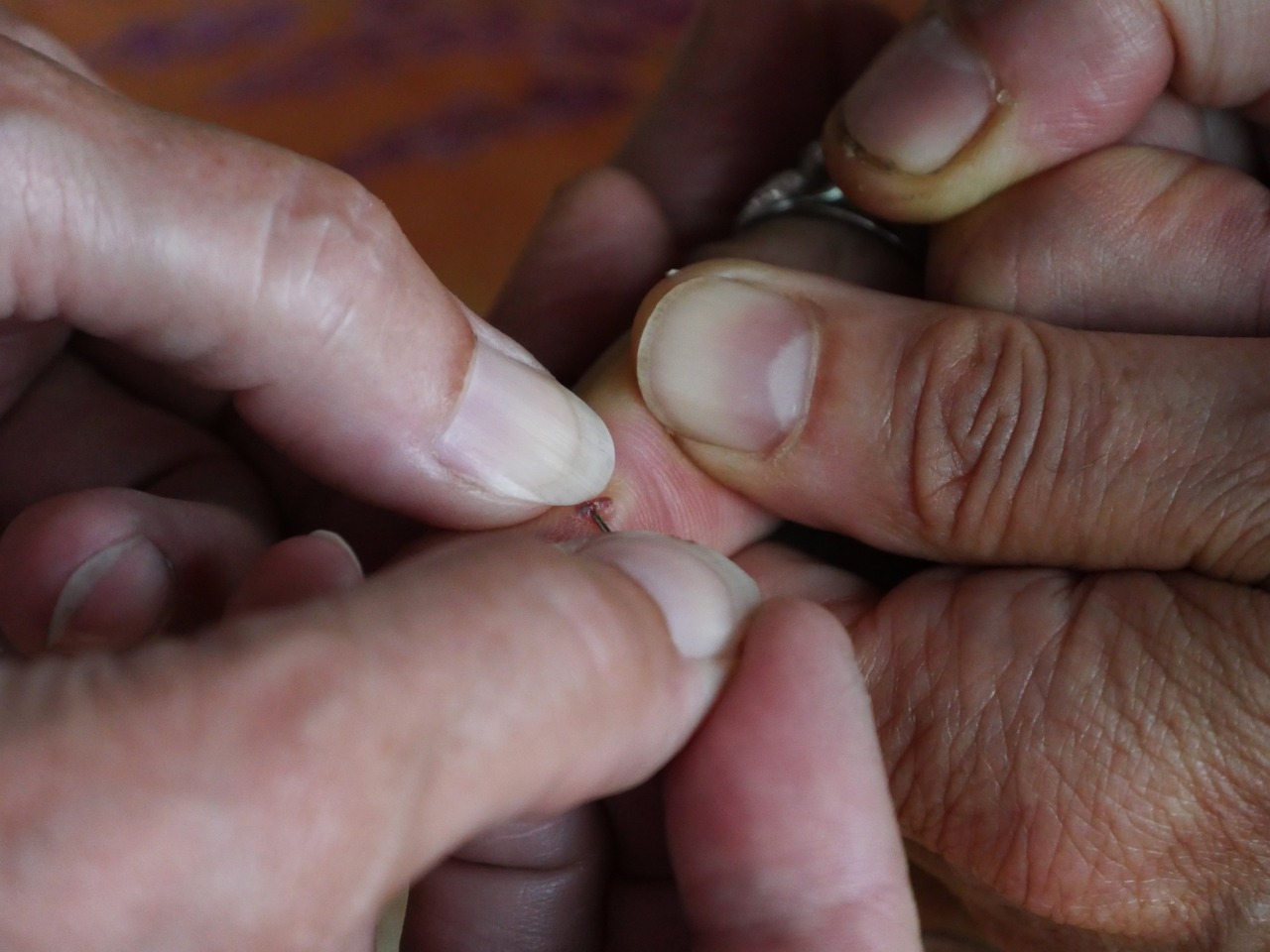
Basic First Aid Supplies
When it comes to our furry companions, being prepared for emergencies is not just smart—it's essential. Having a well-stocked first aid kit can be the difference between a minor incident and a major crisis. Think of it as your pet's safety net, ready to catch them in times of need. So, what should you have in your first aid arsenal? Let’s dive into the must-have supplies that every pet owner should keep handy, both at home and in the car.
First and foremost, your first aid kit should contain bandages. These are crucial for dressing wounds and stopping bleeding. You’ll want a variety of sizes, including adhesive bandages for minor cuts and larger gauze pads for more significant injuries. Additionally, having some cohesive bandage wraps can help secure the gauze without sticking to your pet's fur, which can be a lifesaver.
Another essential item is antiseptic wipes or solution. Keeping a pet's wounds clean is vital to prevent infections. Look for alcohol-free options, as they are less painful and more suitable for our sensitive fur babies. Alongside antiseptics, a good pair of scissors is indispensable. You’ll need them to cut bandages or even to remove matted fur around a wound. Just be careful—safety first!
Of course, we can't forget about thermometers. A digital thermometer designed for pets can help you monitor your furry friend's temperature, which is crucial in emergencies. A normal temperature for dogs and cats ranges from 100.5°F to 102.5°F. If your pet's temperature falls outside of this range, it might be time to call your vet.
Now, let’s talk about medications. Having a few basic medications in your kit can be incredibly helpful. You might want to include:
- Hydrogen peroxide for inducing vomiting in case of poisoning (but always check with a vet first).
- Benadryl for allergic reactions (again, consult your vet for the right dosage).
- Activated charcoal to help absorb toxins in case of ingestion of harmful substances.
Beyond medications, you should also think about a muzzle. While it may seem counterintuitive to use a muzzle on a pet in distress, it can be a necessary tool to prevent bites when your pet is in pain. Choose a muzzle that is comfortable yet secure, and practice putting it on your pet when they are calm to ensure they are familiar with it.
To wrap things up, consider a pet first aid manual. This can be a great resource during emergencies, providing you with quick reference guides for various situations. You can find many comprehensive guides online or at your local pet store. Remember, the goal is to be prepared, so you can act quickly and effectively when your pet needs you the most.
In summary, having a basic first aid kit for your pet is not just a precaution; it’s an act of love. By gathering these essential supplies, you’ll be well-equipped to handle a variety of emergencies, ensuring your furry friend stays safe and healthy.
Creating a First Aid Kit
Creating a well-stocked first aid kit for your pet is not just a good idea; it's a necessity. Think of it as your pet's safety net in times of trouble. Imagine you're on a leisurely walk when suddenly, your furry friend gets into something they shouldn't have or gets injured. Wouldn’t it be reassuring to know that you have the right tools at your fingertips? A comprehensive first aid kit can make all the difference in those critical moments.
To start, you’ll want to gather a variety of supplies that cater to different emergencies. Here’s a quick overview of essential items to consider including in your kit:
- Adhesive Bandages: Perfect for small cuts and scrapes.
- Gauze Pads and Tape: Useful for larger wounds that need to be covered.
- Antiseptic Wipes: To clean wounds and prevent infection.
- Scissors: Handy for cutting bandages or gauze.
- Thermometer: A must-have for monitoring your pet's temperature.
It's also wise to include some basic medications tailored for pets. Always consult with your veterinarian to determine which medications are suitable for your specific pet's needs. For instance, you might want to have:
- Benadryl: For allergic reactions, but only under veterinary guidance.
- Activated Charcoal: In cases of poisoning, but consult your vet first.
Once you have your supplies, the next step is organization. Use a durable, waterproof container to store everything. You can even label different compartments for easy access during emergencies. For example, you might have a section for wound care, another for medications, and one for tools like scissors and thermometers. This way, when the moment arises, you won't waste precious time searching for what you need.
Remember, it’s not just about putting together a kit; it’s about keeping it updated and ready for action. Regularly check the expiration dates on medications and replace any used or expired items. Think of your first aid kit as a living entity that requires your attention to stay effective. After all, your pet relies on you to be their advocate in times of need!
Q: How often should I check my pet's first aid kit?
A: It's best to check your kit every few months to ensure all items are stocked and not expired.
Q: Can I use human medications for my pets?
A: Some human medications can be used for pets, but always consult your veterinarian first.
Q: Where should I keep my first aid kit?
A: Store your first aid kit in a cool, dry place that's easily accessible, both at home and in your car.
Essential Medications
When it comes to the health of your furry friends, being prepared with essential medications can be a game-changer in emergencies. Just like we rely on certain medications to feel our best, our pets also need some key supplies to ensure their health and safety. It's important to remember that while having these medications on hand is beneficial, you should always consult your veterinarian before administering any medication to your pet. They can provide guidance on appropriate dosages and potential side effects, which is crucial for your pet's well-being.
Here are some essential medications you might consider including in your pet's first aid kit:
- Antihistamines: Useful for allergic reactions, antihistamines like Benadryl (Diphenhydramine) can help alleviate symptoms such as itching and swelling. Always check with your vet for the correct dosage based on your pet's weight.
- Activated Charcoal: This is a vital item for cases of poisoning. Activated charcoal can help absorb toxins in the stomach, but it should only be administered under veterinary guidance.
- Hydrogen Peroxide: This can be used to induce vomiting in certain situations, but it should only be used when directed by a veterinarian. Using it incorrectly can cause more harm than good.
- First Aid Ointment: A pet-safe antiseptic ointment can help treat minor cuts and scrapes, preventing infections and promoting healing.
- Pain Relievers: While human pain relievers can be dangerous for pets, your vet may recommend specific medications like Rimadyl or Metacam for pain management.
In addition to these medications, it's wise to have a small supply of basic veterinary supplies, such as a thermometer to monitor your pet's temperature, which can indicate whether they are unwell. A normal temperature for dogs and cats typically ranges from 100.5°F to 102.5°F. If your pet's temperature is outside this range, it's time to consult a vet.
To keep everything organized, consider using a waterproof container for your first aid kit. Label each medication clearly and include a list of emergency contacts, including your veterinarian's phone number and the nearest emergency animal clinic. This way, in the heat of the moment, you won't waste precious time searching for critical information.
In summary, having essential medications in your pet's first aid kit can provide peace of mind and potentially save your pet's life in an emergency. Always prioritize consulting your veterinarian regarding the right medications and dosages for your specific pet's needs. Remember, being prepared is the best way to ensure your furry companion stays safe and healthy!
Q: What should I do if my pet is having an allergic reaction?
A: If you suspect your pet is having an allergic reaction, try to identify and remove the allergen if possible. Administer antihistamines like Benadryl, but only after consulting your veterinarian for the correct dosage. Monitor your pet closely and seek veterinary attention if symptoms worsen.
Q: How can I tell if my pet has ingested something toxic?
A: Signs of toxicity can include vomiting, diarrhea, lethargy, seizures, or difficulty breathing. If you suspect your pet has ingested something harmful, contact your veterinarian or an emergency animal clinic immediately.
Q: Is it safe to use human medications on pets?
A: Many human medications can be toxic to pets. Always consult your veterinarian before giving any medication to your pet, as they can recommend safe options and dosages tailored to your pet's specific needs.
Other Useful Tools
When it comes to pet emergencies, having the right tools can be just as critical as having the right medications. Think of these tools as your pet's lifeline during a crisis. While you might be familiar with basic first aid supplies, there are several other items that can significantly enhance your ability to respond effectively. For instance, a good thermometer is essential. Knowing your pet's temperature can help you determine if they are suffering from fever or hypothermia, both of which require immediate attention.
Additionally, bandages are indispensable in your first aid arsenal. Whether it's a cut, scrape, or more severe injury, having a variety of bandages can help you cover wounds properly and prevent infection. You can find different types, such as adhesive bandages for minor wounds and gauze pads for larger injuries. It's important to remember that not all bandages are created equal; some are designed specifically for pets and provide better protection.
Another useful tool is a muzzle. Now, you might think a muzzle is only for aggressive pets, but that's not the case. In an emergency, even the most docile pet can react unpredictably due to pain or fear. A muzzle can help keep you safe while you administer first aid. Just ensure that it fits properly and doesn’t restrict breathing. If you don’t have a muzzle handy, you can create a makeshift one using a soft cloth or a leash.
Don’t forget about a flashlight either! Emergencies can happen at any time, and being able to see what you’re doing is crucial, especially in low-light conditions. A flashlight can help you examine your pet, check for injuries, or even find your way to the car if you need to rush them to the vet.
Lastly, consider having a pet first aid manual in your kit. This guide can serve as a quick reference during a crisis, providing you with step-by-step instructions on how to handle various situations. In the heat of the moment, it’s easy to forget the details, so having a resource to consult can be invaluable.
In summary, while medications are vital, having a well-rounded toolkit can make a world of difference in emergency situations. From thermometers and bandages to muzzles and flashlights, each tool plays a unique role in ensuring your pet receives the best possible care when it matters most.
Q: What should I include in my pet's first aid kit?
A: Essential items include bandages, antiseptic wipes, gauze pads, a thermometer, scissors, and a muzzle. Don't forget medications specific to your pet's needs!
Q: How do I know if my pet is having a medical emergency?
A: Look for signs such as difficulty breathing, excessive bleeding, sudden lethargy, or unresponsiveness. If in doubt, it's always best to consult a veterinarian.
Q: Can I use human medications on my pet?
A: Many human medications can be harmful to pets. Always consult your veterinarian before administering any medication to ensure it's safe and appropriate.
Q: What should I do if my pet is choking?
A: Stay calm and assess the situation. If your pet is still breathing, try to encourage them to cough. If they are not breathing, you may need to perform the Heimlich maneuver or seek immediate veterinary assistance.
CPR and Resuscitation Techniques
When it comes to our furry friends, knowing how to perform CPR (Cardiopulmonary Resuscitation) can be a game-changer in life-threatening situations. Just like humans, pets can suffer from cardiac arrest or respiratory failure, and acting quickly can mean the difference between life and death. It’s crucial to stay calm and follow these steps to give your pet the best chance of recovery.
First, you need to assess the situation. Check if your pet is breathing and has a heartbeat. If they are unresponsive and not breathing, it’s time to spring into action. For dogs, you can check for a heartbeat by placing your hand on the left side of their chest, just behind the elbow. For cats, the heartbeat can be felt just below the left side of their ribcage. If you don’t feel a pulse, proceed with CPR.
Here’s a simple breakdown of how to perform CPR on both dogs and cats:
| Step | Dogs | Cats |
|---|---|---|
| 1. Position | Lay your dog on its right side on a flat surface. | Place the cat on its side, ensuring it’s on a stable surface. |
| 2. Chest Compressions | Place your hands on the widest part of the chest and compress firmly at a rate of 100-120 compressions per minute. | Use one hand to compress the chest, pushing down about 1/3 of the chest depth at the same rate. |
| 3. Rescue Breaths | After every 30 compressions, give 2 rescue breaths by sealing your mouth around the dog’s snout and blowing gently. | Close the cat’s mouth and cover its nose, giving 2 gentle breaths. |
| 4. Repeat | Continue the cycle of 30 compressions followed by 2 breaths until help arrives or the pet starts breathing. | Keep repeating until you see signs of breathing or a vet arrives. |
Timing is everything in an emergency. If your pet is unresponsive, don’t waste precious minutes—start CPR immediately. Remember, it's always best to have a veterinarian examine your pet after performing CPR, even if they seem to recover. There could be underlying issues that need professional attention.
In addition to CPR, it’s essential to be familiar with other resuscitation techniques tailored to your pet's size and breed. For larger dogs, you may need to use your body weight to ensure the compressions are effective, while smaller pets may require more delicate handling. Always adapt your technique to suit your pet's needs.
Lastly, consider enrolling in a pet first aid course. These courses often cover CPR and other emergency techniques in-depth, giving you hands-on experience and confidence in your ability to save your pet’s life. Remember, being prepared is key!
- Can I perform CPR on my pet if I'm not trained? While it's always best to be trained, in an emergency, doing something is better than doing nothing. Follow the steps outlined above.
- How long should I perform CPR? Continue CPR until your pet starts breathing or until a veterinarian arrives.
- What should I do if my pet is breathing but unresponsive? Keep your pet calm and warm, and seek veterinary assistance immediately.

Handling Specific Emergencies
When it comes to our furry companions, being prepared for emergencies is not just a good idea; it's a necessity. Just like humans, pets can find themselves in tricky situations that require immediate action. Understanding how to handle specific emergencies can mean the difference between life and death. So, let's dive into some of the most common pet emergencies and how to tackle them effectively!
First up is choking. Imagine your pet, happily munching away on their favorite treat, only to suddenly start gagging or pawing at their mouth. This is a clear sign that something is wrong. Choking can be a life-threatening situation, and recognizing the symptoms is crucial. Look for signs such as difficulty breathing, excessive coughing, or a bluish tint to the gums. If you notice these symptoms, it’s time to act swiftly. The Heimlich maneuver for pets is a lifesaving technique that every pet owner should know. For dogs, you can stand behind them, place your arms around their waist, and give a firm thrust inward and slightly upward. For smaller pets, you might need to hold them with their back against your chest and perform similar thrusts. Remember, if the object doesn’t come out quickly, don’t hesitate to seek veterinary assistance!
Next, let’s talk about heatstroke. As temperatures rise, so does the risk of heat-related illnesses in our pets. Dogs and cats can’t sweat like we do, making them more susceptible to overheating. Signs of heatstroke include excessive panting, drooling, weakness, and even collapse. If you notice any of these symptoms, it’s crucial to act fast. Move your pet to a cooler environment immediately, and start cooling them down with cool (not cold) water. You can wet their fur and provide them with a fan to help lower their body temperature. Always monitor your pet closely and, if their condition doesn’t improve, seek veterinary care right away. Heatstroke can escalate quickly, so don’t play around with it!
In addition to choking and heatstroke, poisoning is another serious concern for pet owners. Pets are naturally curious creatures, and they often explore their environment by tasting things. This can lead to accidental ingestion of toxic substances like household cleaners, certain plants, or even human foods that are harmful to them. If you suspect your pet has ingested something toxic, don’t wait for symptoms to appear. Contact your veterinarian or a pet poison hotline immediately. They can provide guidance on the next steps, which may include bringing your pet in for treatment or inducing vomiting. It’s always better to err on the side of caution when it comes to potential poisoning.
To help you remember these critical steps, here’s a quick reference table summarizing the actions to take during these emergencies:
| Emergency | Signs | Immediate Action |
|---|---|---|
| Choking | Gagging, pawing at mouth, bluish gums | Perform Heimlich maneuver, seek vet assistance if needed |
| Heatstroke | Excessive panting, drooling, weakness | Move to cool area, wet fur, contact vet if no improvement |
| Poisoning | Varies based on substance | Contact vet or poison hotline immediately |
In conclusion, being aware of these specific emergencies and knowing how to handle them can make a world of difference for your pet. Remember, your calm and collected response can help your pet feel safe and secure during a crisis. Always keep your first aid kit stocked, and don’t hesitate to reach out to professionals when in doubt. After all, our pets rely on us to be their protectors!
Q: What should I do if my pet is choking and I can't dislodge the object?
A: If you’re unable to remove the object quickly, take your pet to the vet immediately. Time is of the essence in choking emergencies!
Q: How can I prevent heatstroke in my pet?
A: Always provide plenty of water and shade during hot weather, limit exercise on hot days, and never leave your pet in a parked car.
Q: What common household items are toxic to pets?
A: Common items include chocolate, grapes, onions, certain plants (like lilies), and many human medications. Always keep these out of reach!
Q: How can I prepare my pet for emergencies?
A: Create a first aid kit, familiarize yourself with emergency procedures, and keep your vet’s contact information handy.
Choking in Pets
Choking is a serious and potentially life-threatening situation for our furry friends. Imagine your beloved dog or cat suddenly gasping for air, their eyes wide with panic. It’s a sight no pet owner wants to witness, but knowing how to respond can mean the difference between life and death. First, let’s talk about how to recognize the signs of choking in your pet. Common indicators include:
- Gagging or coughing
- Pawing at the mouth
- Excessive drooling
- Blue-tinged tongue or lips
- Restlessness or inability to settle down
If you notice these symptoms, it’s crucial to act quickly. The first step is to try to determine what your pet is choking on. If it’s a small object that you can see, try to remove it carefully. However, be cautious; you don’t want to push it further down the throat. If the object is not visible or if your pet is still struggling, it’s time to perform the Heimlich maneuver.
For dogs, the Heimlich maneuver involves standing behind your pet, placing your arms around their belly, and making a quick thrust inward and slightly upward. This motion can help dislodge the object. If your dog is small, you can hold them upside down while giving a few sharp thrusts. For cats, the process is similar, but it’s often easier to simply hold them in your lap and apply gentle pressure to their abdomen.
After performing the Heimlich maneuver, always check your pet’s mouth for any remaining obstruction. Even if they seem fine afterward, a trip to the veterinarian is a good idea to ensure there are no injuries or lingering issues. Remember, time is of the essence in these situations, so don’t hesitate to seek professional help if needed.
In summary, being aware of the signs of choking and knowing how to respond can save your pet's life. It’s like being a superhero for your furry companion—ready to swoop in and save the day when they need you the most. Always keep your first aid kit handy, and practice these techniques to ensure you’re prepared for any emergency.
Q: What should I do if I can't remove the object?
A: If you’re unable to dislodge the object, take your pet to the nearest veterinary clinic immediately. Time is critical, so don’t delay.
Q: Can I perform the Heimlich maneuver on all pets?
A: The Heimlich maneuver is generally safe for both dogs and cats, but you should adapt your approach based on your pet's size and shape.
Q: How can I prevent my pet from choking in the first place?
A: Always supervise your pets while they’re eating and avoid giving them small items that could pose a choking hazard. Regularly check their toys for wear and tear, and discard any that are falling apart.
Heatstroke Awareness
As the sun blazes down during those hot summer days, it’s essential to keep a vigilant eye on our furry friends. Heatstroke is a serious condition that can affect pets, especially dogs and cats, who may not be able to cool themselves effectively. Imagine being stuck in a sauna; that’s how your pet feels when they’re overheating! Recognizing the signs of heatstroke early can be the difference between life and death.
So, what should you look for? Common symptoms include excessive panting, drooling, a rapid heartbeat, and lethargy. If your pet starts to exhibit these signs, it’s crucial to act quickly. In severe cases, you might notice vomiting, diarrhea, or even loss of consciousness. If you see any of these alarming symptoms, it’s time to take action!
To prevent heatstroke, ensure your pet has access to cool, fresh water and shade at all times. During the hottest parts of the day, it’s best to limit outdoor activities. Think of it like running a marathon in the heat—you wouldn’t want to do that without proper hydration and breaks!
If your pet does show signs of heatstroke, here’s a step-by-step guide on what to do:
- Move to a cooler area: Get your pet out of the heat immediately.
- Hydrate: Offer cool water, but don’t force them to drink.
- Cool them down: Use wet towels or a hose to gently cool your pet’s body, focusing on areas like the neck, armpits, and groin.
- Seek veterinary help: Even if your pet seems to recover, it’s essential to have them checked by a vet.
Remember, heatstroke can occur quickly, so don’t underestimate the risks. It’s always better to be safe than sorry. Keep a close watch on your pets during the summer months, and if you’re ever in doubt, don’t hesitate to consult your veterinarian.
Q: How can I tell if my pet is overheating?
A: Look for symptoms like excessive panting, drooling, weakness, and rapid heartbeat. If your pet is exhibiting these signs, take action immediately.
Q: What breeds are most susceptible to heatstroke?
A: Brachycephalic breeds (like Bulldogs and Pugs) and older or overweight pets are at a higher risk. However, any pet can suffer from heatstroke.
Q: Can I use ice packs on my pet?
A: Avoid using ice packs directly on your pet’s skin, as this can cause frostbite. Instead, use cool, wet towels.
Q: What should I do if my pet has heatstroke?
A: Move them to a cooler area, offer water, and wet their body. Always seek veterinary assistance, even if they seem to recover.
Frequently Asked Questions
- What should I do if my pet is choking?
If your pet is choking, first try to remain calm. Look for signs of distress, such as pawing at the mouth or difficulty breathing. For dogs, you can perform the Heimlich maneuver by standing behind them, placing your arms around their waist, and giving a quick thrust inward and slightly upward. For cats, try to gently grasp them and give a few firm pats on the back. If the object doesn't dislodge, seek veterinary assistance immediately.
- How can I tell if my pet is experiencing heatstroke?
Heatstroke can be life-threatening, so it's crucial to recognize the signs early. Look for symptoms like excessive panting, drooling, weakness, or disorientation. If your pet is showing any of these signs, move them to a cooler area and offer water. You can also wet their fur with cool (not cold) water to help lower their body temperature. If symptoms persist, contact your veterinarian right away.
- What essential items should I include in my pet's first aid kit?
Your pet's first aid kit should include items like bandages, antiseptic wipes, gauze, scissors, tweezers, and a digital thermometer. Additionally, consider adding specific medications recommended by your vet, such as antihistamines or activated charcoal for poisoning. Having a well-stocked first aid kit can make a significant difference during emergencies.
- How do I perform CPR on my pet?
Performing CPR on a pet is critical in emergencies. For dogs, place them on their right side, and with a flat hand, compress the chest about 1-2 inches deep at a rate of 100-120 compressions per minute. For cats, use one hand to compress their chest gently. After every 30 compressions, give 2 rescue breaths by sealing your mouth over their nose and blowing gently. Always seek veterinary help immediately after performing CPR.
- When should I take my pet to the vet after an emergency?
It's always better to err on the side of caution. If your pet has experienced any emergency, such as choking, heatstroke, or poisoning, a visit to the vet is advisable, even if they seem fine afterward. Some symptoms may not appear immediately, and a professional evaluation can ensure your pet's health and safety.

